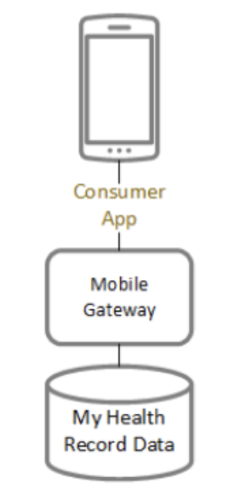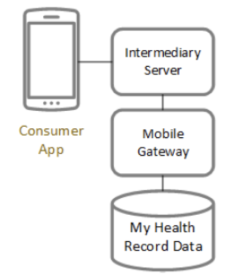Introduction
The My Health Record system allows individuals, their representatives, and their healthcare providers to view their digital health record in one central online location. To learn about the available options for connecting software to the My Health Record system, review the details here.
If you would like to connect your software to the My Health Record FHIR® Gateway, you are in the right place.
The Developer Guides provided at the end of this page will help you:
- Understand high-level concepts regarding the My Health Record system and the FHIR® Gateway
- Register as a developer for the Gateway
- Understand your testing obligations
- Understand guidelines regarding security, consent, incident management and app presentation and
- Understand the content which will be delivered in these guides
Pre-requisites
Connection with the Healthcare Identifiers (HI) Service is a pre-requisite to becoming conformant with My Health Record. Please refer to HI Service if you have not completed this step.
Overview of FHIR® Gateway
This guide is focused on the Fast Healthcare Interoperability Resources® (FHIR®) Gateway (also previously known as the Mobile Gateway). You can use the FHIR® Application Programming Interfaces (APIs) (REST-based) to build apps and other products targeting consumers. The diagram below represents the gateway between the My Health Record system and the end product.

The consumer authenticates themselves using their MyGov credentials. Your product will redirect the users to the MyGov authentication page and receive a token for authenticated users. Your product can then use this token to access the consumer’s My Health Record.
The complete FHIR® Gateway specifications include many interaction models, however only 2 of these interaction models are currently available to developers:
Consumer (Self-care) and
Consumer Connection Via Platform
Both models are for consumer use. The primary difference is that “Consumer Connection Via Platform” model includes the use of an intermediary server to store information between retrieval from the My Health Record system and use within your product.
The interaction models are presented in the diagrams below.
Interaction models
Consumer / Self-Care

Consumer mobile app connects with the My Health Record system via the FHIR® gateway.
Consumer Connection via Platform

Consumer mobile app connects with the My Health Record system via an intermediary server (managed by the Mobile Application Developer), which orchestrates the flow of data between the mobile app, FHIR® Gateway, or an end server (either managed by the Mobile Application Developer or third party).
Note: It is possible that you present the data accessed via the intermediary server to the end user in a web app (e.g. portal accessible via a web browser).
In the developer guides (below) interaction model “Consumer (Self-Care)” will be used to develop a mobile app.
The Agency mobile enablement program is using the FHIR® Draft Standards in creating the mobile APIs. Mobile application developers can use various high level architecture approaches to integrate with the FHIR® Gateway of the My Health Record system.
Assessment framework for mHealth apps
The Assessment framework for mHealth Apps is the result of extensive consultation (domestically and internationally). It is published here as national guidance and a useful reference tool for app developers working on mHealth apps for release in Australia.
More: https://www.digitalhealth.gov.au/about-us/strategies-and-plans/assessment-framework-for-mhealth-apps
Related content
FHIR® Resources (Implementation Guides)
FHIR® is an open-source healthcare data standard that enables continuous real-time data exchanges between healthcare applications. See the implementation guides below on how to connect your software to these products via FHIR®.
Gateways
Discover our API gateways
Getting started education modules
If you are interested in integrating your software with the My Health Record system, we recommend starting by reviewing our education modules.
Developer guides
My Health Record - Mobile integration
The Australian Digital Health Agency aims to increase the adoption of the My Health Record by connecting the My Health Record platform to mobile applications through industry-standard APIs.
My Health Record FHIR® Mobile Gateway - Registration and Overview
In this tutorial, you will; register as a developer for the Gateway, understand your testing obligations and more
My Health Record FHIR® Mobile Gateway - Environment Setup and Authentication
Within these guides we will demonstrate the functionality of the FHIR® Gateway using Xamarin.Forms in Visual Studio and the Android Emulator
My Health Record FHIR® Mobile Gateway - Patient Details and Record List
We will use the token received from MyGov to access the patient’s My Health Record
My Health Record FHIR® Mobile Gateway - Personal Health Summary
In this guide, we will be accessing a patient’s medications and allergies contained in a Personal Health Summary
My Health Record FHIR® Mobile Gateway - Clinical Document Service
In this guide, we will be accessing Prescription and Dispense List and Allergies List contained in a patient’s clinical document service
My Health Record FHIR® Mobile Gateway - Generic Document Services
This guide will look at retrieving all clinical document data (including these 2, but excluding MBS documents)
My Health Record FHIR® Mobile Gateway - Medicare and PBS Information
When a patient has an appointment with a healthcare provider, and that healthcare provider is eligible for a Medicare rebate, a Medicare Benefits Schedule (MBS) clinical document is sent to Medicare
My Health Record Document Types
The My Health Record system uses document class codes and type codes as critical metadata elements to enhance the search and discovery of clinical documents.
Pharmacist Shared Medicines List (PSML)
The Pharmacist Shared Medicines List (PSML) is a clinical document type supported by the My Health Record system.
My Health Record Connecting Systems - Security Conformance Profile - FAQs
The Security Requirements for My Health Record Connecting Systems Conformance Profile contains software requirements that harden clinical information systems from cyber security attacks, uplift information security and protect patient information and your software product.